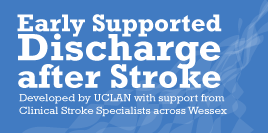 |
Incontinence |
Recommendations 6.24.1
A. All wards and stroke units should have established assessment and management protocols for both urinary and faecal incontinence, and for constipation in stroke patients
B. Patients with stroke who have continued loss of bladder control 2 weeks after diagnosis should be reassessed to identify the cause of incontinence, and have an ongoing treatment plan involving both patients and carers. The patient should:
- have any identified causes of incontinence treated
- have an active plan of management documented
- be offered simple treatments such as bladder retraining, pelvic floor exercises and external equipment first
- only be discharged with continuing incontinence after the carer (family member) or patient has been fully trained in its management and adequate arrangements for a continuing supply of continence aids and services are confirmed and in place
C. All stroke patients with a persistent loss of control over their bowels should:
- be assessed for other causes of incontinence, which should be treated if identified
- have a documented, active plan of management
- be referred for specialist treatments if the patient is able to participate in treatments
- only be discharged with continuing incontinence after the carer (family member) or patient has been fully trained in its management and adequate arrangements for a continuing supply of continence aids and services are confirmed and in place
D. Stroke patients with troublesome constipation should:
- have a prescribed drug review to minimise use of constipating drugs
- be given advice on diet, fluid intake and exercise
- be offered oral laxatives
- be offered rectal laxatives only if severe problems remain
Sources 6.24.2
A. Consensus
B. National Institute for Health and Clinical Excellence 2010d; Thomas et al 2008; consensus
C. National Institute for Health and Clinical Excellence 2007b; Coggrave et al 2006; consensus
D. www.cks.library.nhs.uk/Constipation/in_summary/scenario_adults; consensus
E. www.rcplondon.ac.uk stroke guidelines 2012
 |